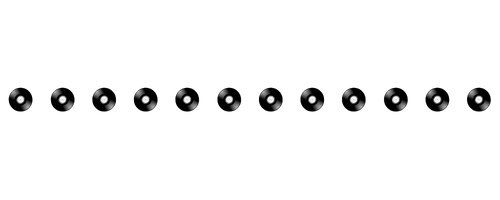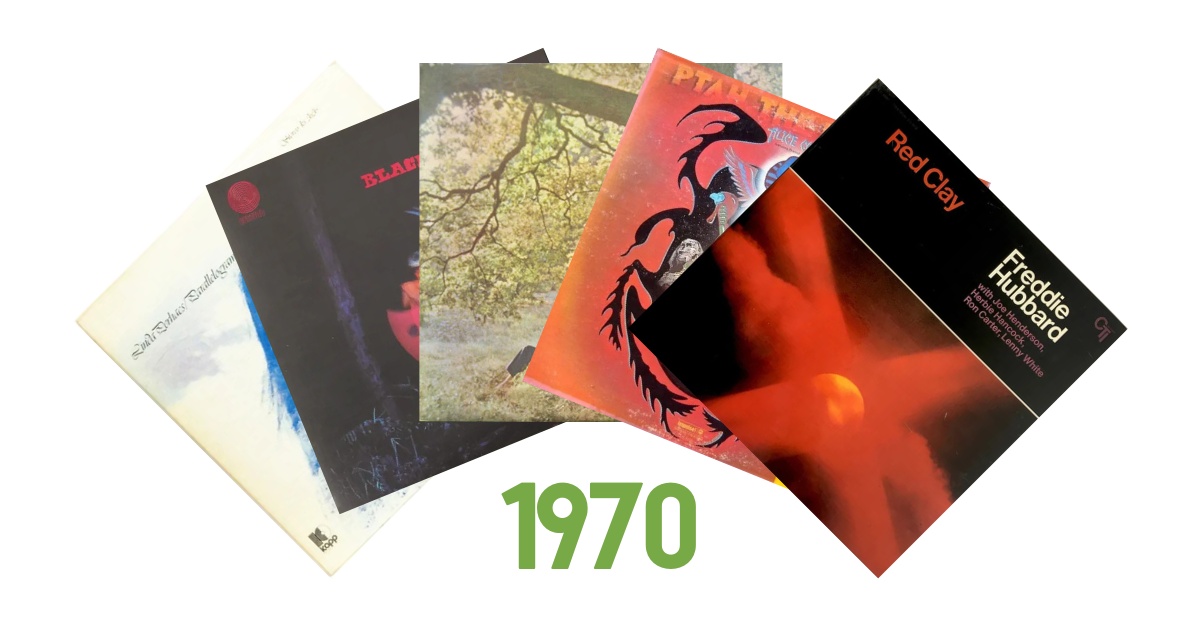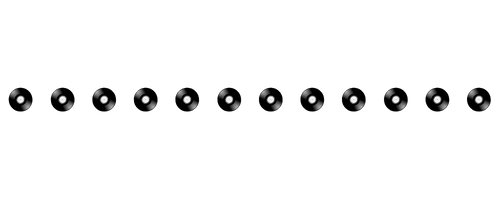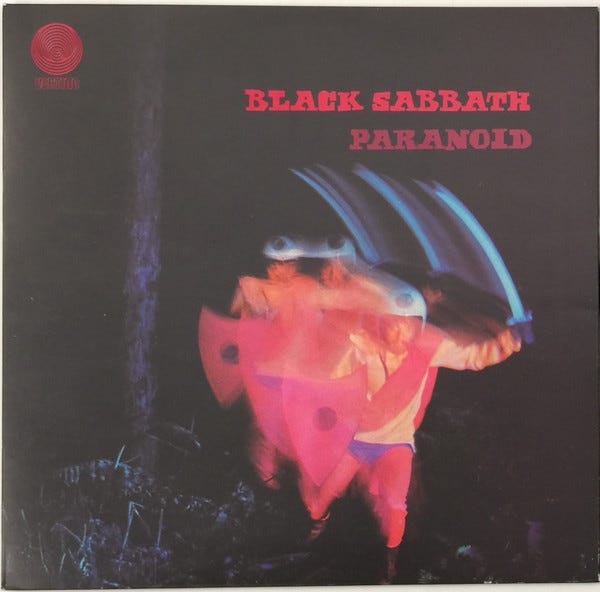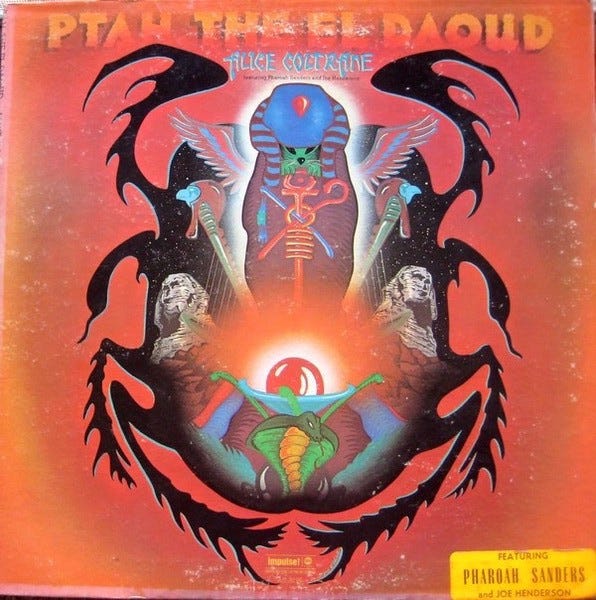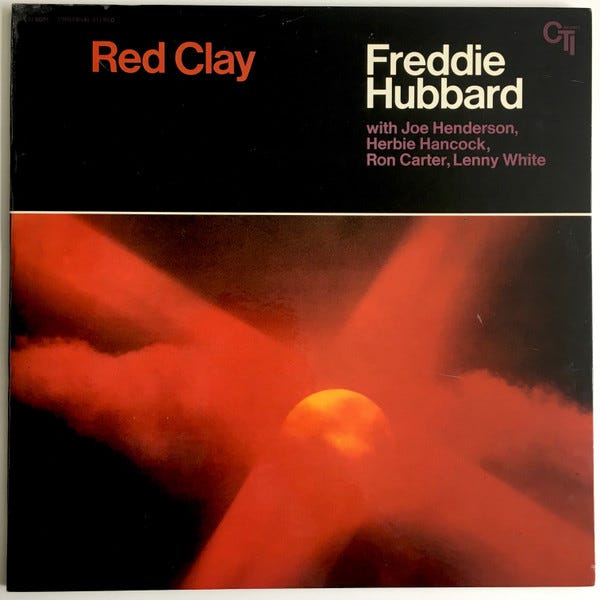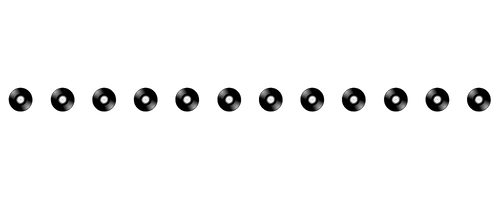Record Collecting: 1970 (Parallelograms thru Red Clay)
Linda Perhacs, Black Sabbath, John Lennon & the Plastic Ono Band, Alice Coltrane, and Freddie Hubbard
Welcome to my series on record collecting, where we select 30 albums to target for each year between 1960 and 2020. You can find the manifesto here, including links to other entries. In short, as I map my own thinking on how to invest in building a record collection, I hope it will be a useful guide in thinking about yours. The goal is a personal collection that doubles as a modern art musical library with, you know, killer tunes. Apologize in advance for the massive gaps in my musical knowledge. That’s what the comment section is for.
The year is 1970. The Beatles break up. Simon & Garfunkel disband, even as Bridge Over Troubled Water dominates the charts and record sales. Elvis breaks the concert attendance record with a performance at the Houston Astrodome. Jacksonmania. Johnny Cash performs at the White House at the invitation of Nixon, while Grace Slick attempts to spike the president’s tea with LSD. Casey Kasem’s American Top 40 debuts. Songs of the Humpback Whale is an unexpected bestseller. At Osaka’s Expo ‘70, West Germany debuts the world’s first spherical concert hall, where Stockhausen presents hours-long live programs everyday. Jimi Hendrix overdoses on barbiturates, Janis Joplin on heroin. Tammi Terrell succumbs to a brain tumor and Otis Spann to liver cancer. Slim Harpo dies of a heart attack. Albert Ayler disappears and is found dead in NYC’s East River weeks later. Music journalist Mike Saunders coins “heavy metal.”
See all of the 1970s selections
See all selections listed by artist
1970
Part 5
Listed alphabetically by album title
Linda Perhacs - Parallelograms (Kapp)
psychedelic folk
A gorgeous folk wormhole. Perhacs is a dental hygienist who jumps at a chance encounter with a film composer-turned-producer to professionalize her hobby. She is fully of her time and place: Topanga Canyon folk that is dreamily diaristic, the lyrics often lost in her flute-like mezzo-soprano voice. She supports with finger-picked acoustic guitar patterns that ignore tempo for vibe-creation. Equally important, she isn’t afraid to play with interesting effects and jazzy arrangements. Shelly Manne, for example, appears on drums! Opener “Chimacum Rain” is worth the price of admission alone, a downpour of multi-tracked Perhacses water a blooming sense of wonder at life. The Joni Mitchell comparisons are inevitable, but Perhacs is arguably more sonically adventurous at this point. Most interestingly, her early-70s, long-straight-brown-hair-and-wooden-jewelry sound seems to tunnel right past the next few decades and reappear on the albums of 2000s, just as New Weird America gains traction. Fitting that these folks find Perhacs exactly where she was when recording Parallelograms: in Topanga Canyon cleaning teeth. Sometimes you are completely of-the-moment as well as way ahead of your time.
Speaking of of-the-moment, the album cover is 1000% early-70s. It certainly looks like something you would flip by quickly in the record bins without giving much of a second thought. Kapp doesn’t do Perhacs any favors in the initial production of this record and that extends to the cover design. That said, it certainly is a fitting jacket for a long-lost cult-classic, in all its kitschy drama.
Black Sabbath - Paranoid (Vertigo)
heavy metal
An utter lack of over-thinking. Some may argue an utter lack of thinking at all, but those people are boring. Four months after their startling debut, Sabbath head back into the studio so the label can capitalize on their surprisingly robust sales. Luckily, Tony Iommi is an ear-pulverizing riff-generator, and each song starts with his rhythmic guitar ideas. The band then reacts lyrically and musically to their surroundings (nuclear war threats, Vietnam War morass, political corruption, heavier and heavier drug use, bleak Birmingham and its lack of opportunity) with an industrialized hippie attitude: pro-peace; anti-establishment; love of mixing blues, psych, and rock; underbaked lyrical decisions; and a search for meaning in an anxious world. Their catharsis is not in a global embrace, however, but rather in a bulldozer through the bullshit. Sure it is heavy-handed, sure it is lacking subtlety, sure it is campy at moments, but all of that is a small price to pay for the pulse-pounding urgency. The whole point of headbanging, after all, is that you don’t have to think for at least a few moments in this long, complicated life.
Uhhhhh, it’s a completely terrible album cover and everyone knows it, including the band. Record labels can be the worst sometimes.
John Lennon / Plastic Ono Band - John Lennon / Plastic Ono Band (Apple)
avant-pop-rock
A musical primal scream. Partly because it is influenced by Dr. Arthur Janov’s trauma-based psychotherapy of the same name; partly because Lennon has a few things he needs to get off his chest. And he is not shy in using the album as an exorcism of sorts. “Mother,” which opens the record, concludes with anguished yelps of “Mama, don’t go / Daddy, come home” atop deeply resonating piano chords and Ringo Starr’s steady backbeat. If emo (and maybe even hardcore) got its start in any one place in particular, it is in these five minutes. Lennon shapeshifts musically through familiar sounds from his discography, but the lyrical content is much deeper introspection than he ever put to tape, whether commenting circularly on his status in the socio-cultural ecosystem or the role of idolatry in contemporary life. Starr and Plastic Ono Band-mate Klaus Voorman retrospectively speak about the worry they feel in the moment for Lennon’s state of mind. You can hear it in the music, especially Lennon’s attempts to sing his way into some sort of resolution. It’s no wonder listeners find so much catharsis in this shared processing.
It is a beautiful cover in its simplicity. (It is also beautiful how they flip places on Yoko Ono’s album of the same name.) They are in the setting in which you should be listening to the record, because anywhere else might lead you to a much too dark place.
Alice Coltrane - Ptah, the El Daoud (Impulse!)
post-bop jazz
“That march you hear is a march on to purgatory.” Coltrane is referring to the opening minutes of the record: Ron Carter’s resolute walking bassline, Ben Riley working the snare, Joe Henderson’s tenor sax tracked left, taking the first solo with a densely arpeggiated intelligence, Pharoah Sanders’s tenor tracked right, bending notes to demonstrate that preconceived rules are nonsense. Beneath it all, Coltrane’s piano, deeply resonant at the low end while her right hand delicately sweeps through one series of harmonic ideas after another. They record at Coltrane’s home, and it creates a relaxed warmth throughout the album, an inviting blend of spiritual blues and meditative jazz, abstracted but only “out there” in the sense the quintet’s impressions are beyond earthly concerns. Coltrane mostly paints with her piano, but she does move to the harp for “Blue Nile.” It sounds like an early morning rain, Henderson and Sanders using flutes for birdsong solos. Ptah remains accessible throughout, even if Coltrane is heading into deep religious searching. It evokes the sound of her late husband, but never gets lost in his seemingly endless legacy.
Ptah is an ancient Egyptian deity, so it is not difficult to figure out how Impulse! gets to the jacket design. Something about it doesn’t quite work for me though. I think it is in its overstuffedness (do we really need those sphinxes, for example?). Pare it back by half and I bet it is more aesthetically effective.
Freddie Hubbard - Red Clay (CTI)
post-bop fusion
Hubbard gets his signature tune and CTI gets its signature 70s sound. Hubbard’s contributions to the evolution of jazz in the 60s are unimpeachable. He is a hard bopper who could get as far out as needed, sounding spirited across the spectrum. Creed Taylor taps the trumpeter to lead a record for his new-ish artistic-but-accessible CTI label, both producer and musician reacting to fusion and mainstream pressures on the genre. Hubbard brings in Herbie Hancock on electric piano and Hammond organ for a modern, plugged-in sound and backs him with post-bop luminaries Ron Carter on bass and Joe Henderson on tenor sax. Finally, the youth, 20-year-old Lenny White on drums, his cleverly syncopated beat paired with Carter’s funky bassline on the title track create a perfectly balanced, multi-hyphenated post-bop-soul-jazz-fusion (with an interesting muffled bass drum). It sounds permanently futuristic but also anchored in the decade that proceeds it, Hubbard’s lead melody a natural iteration of his Jazz Messengers work. The three other tracks on the record similarly groove, loosely tethered but tightly played. You can almost hear Taylor’s eyes widening as he realizes the future of his profitable imprint.
CTI loves the big glossy covers. This one walks right up to the cheese-line and peers over the edge. It works, but oh, is it ever-so close.

